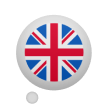
Spelled or Spelt: Choose Carefully!
Spelled is considered the correct past tense for the word to spell in America and Canada, although spelt is sometimes also used. Irregular verb forms such as spelt, dreamt, and burnt are used colloquially in the US but generally should be avoided in formal writing.

Get a FREE guide!
Want to sound like a native English speaker?
Get our free PDF with top tips that work.

Check your email!
Spelled or Spelt: The matter of Location
Spelled is considered the correct past tense for the word to spell in America and Canada, although spelt is sometimes also used. Irregular verb forms such as spelt, dreamt, and burnt are used colloquially in the US but generally should be avoided in formal writing.
In the UK, New Zealand, and Australia, spelt has been seen historically as the correct form, though both have been used for a long time. In recent decades spelled has overtaken spelt as the most common form used in British English, however.
Verbs that derive from to spell, such as misspelling, follow the same rules for choosing spelled or spelt.
Past tense of spell and its use
So far, we’ve discussed the use spelt vs. spelled in the verb’s primary context, identifying the letters of a word, usually by writing them out. This is not the only meaning of the spell, however.
It can also be used in idioms as a synonym for foreshadows. For example, you could say that something “spells trouble.” In these cases, spelled is usually seen as the correct verb form.
The past tense of “spell,” which is the word spelt can also refer to a type of wheat. This has nothing to do with the word to spell and should never be referred to as spelled.
Summary
While both words appear in every variant of the English language, only British English considers spelt the correct form, and even there, spelled is widely used and accepted. As a result, try to avoid spelt when writing for an American, Canadian, or international audience. When writing for the UK, NZ, or Australia, you can use either, but Brits, in particular, might prefer that you use spelt. Watch out for everyday uses of to spell, though, where spelt is never correct.
















